Silky Oak
- November 28, 2023
- 0 comment
Silky Oak, scientifically known as Grevillea robusta, is a majestic and versatile tree that hails from the rainforests of Australia. Renowned for its striking appearance and myriad uses, this evergreen tree belongs to the Proteaceae family. The name “Silky Oak” is derived from the silky texture of its finely divided leaves, which cascade in fern-like clusters.
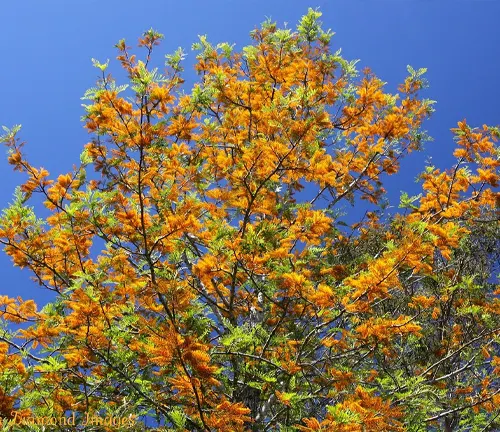
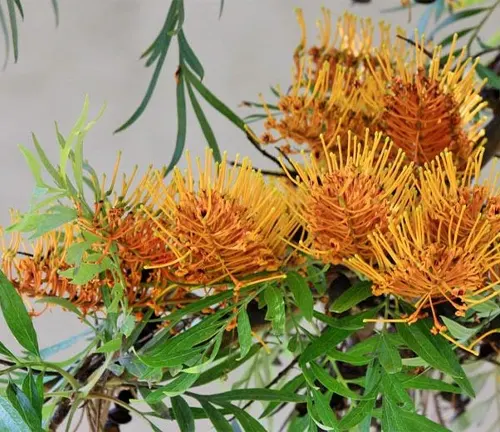
Standing tall with a graceful and symmetrical form, the tree can reach impressive heights of up to 100 feet. What truly sets the Silky Oak apart is its vibrant and eye-catching flowers. The tree produces large, golden-orange blossoms that form in dense clusters, creating a spectacular display during the flowering season. Beyond its ornamental value, the Silky Oak also boasts durable timber, making it a valuable resource for various woodworking applications.
Its timber is characterized by a lustrous finish and is often used in furniture crafting, cabinetry, and even musical instruments. Additionally, the tree serves ecological purposes by providing habitat and food for native wildlife. Due to its adaptability, the Silky Oak has found a place in landscaping and is cultivated in various regions with suitable climates, adding a touch of elegance to gardens and parks. Whether appreciated for its aesthetic appeal, practical applications, or ecological contributions, the Silky Oak stands as a testament to the natural beauty and resourcefulness of Australia’s flora.
| Characteristic | Description |
|---|---|
| Scientific Name | Grevillea robusta |
| Family | Proteaceae |
| Native To | Rainforests of Australia |
| Height | Up to 100 feet |
| Foliage | Evergreen with finely divided, silky-textured leaves |
| Flowers | Large, golden-orange blossoms in dense clusters |
| Timber Characteristics | Durable timber with a lustrous finish |
| Timber Uses | Furniture crafting, cabinetry, musical instruments |
| Ecological Role | Provides habitat and food for native wildlife |
| Landscaping Use | Cultivated for ornamental purposes in gardens and parks |
| Adaptability | Well-suited to various climates |
| Versatility | Appreciated for aesthetic appeal, practical applications, and ecological contributions |
Botanical Beauty of “Silky Oak”
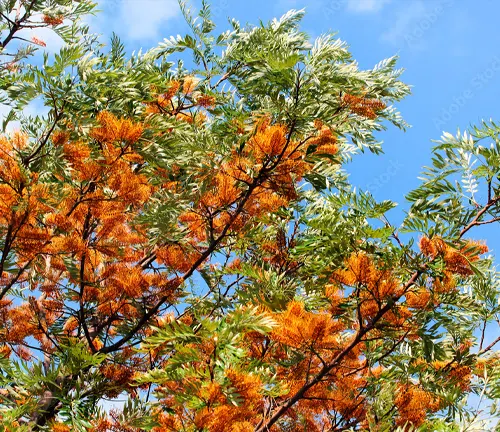
In the lush rainforests of Australia, the Silky Oak, scientifically known as Grevillea robusta, stands as a botanical marvel. Its striking appearance and unique features make it a captivating presence in the natural world. The name “Silky Oak” is derived from the texture of its finely divided leaves, which cascade delicately, giving the tree an elegant and distinguished look. With its towering height and symmetrical form, the Silky Oak is not merely a tree; it’s a testament to the botanical beauty that nature can unfold.
Woodland Elegance
Beyond its ornamental value, the Silky Oak boasts a practical elegance in the realm of woodworking. The tree yields a durable and lustrous timber that has become highly sought after. This timber, with its smooth finish, finds its way into the crafting of exquisite furniture, cabinetry, and even musical instruments. The wood’s versatility and aesthetic appeal contribute to its growing popularity in the woodworking industry, adding a touch of woodland elegance to a variety of creations.
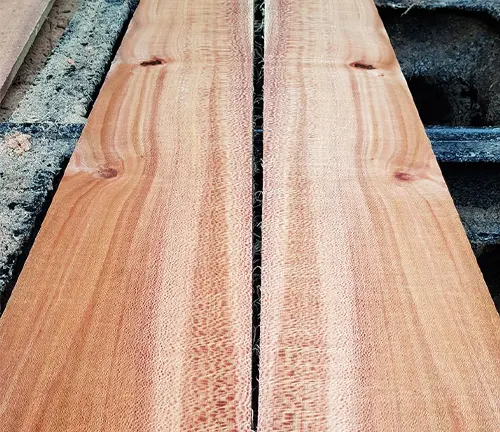
Ecological Importance
In the intricate web of ecosystems, the Silky Oak plays a vital role. Beyond its aesthetic and economic significance, the tree serves as a haven for native wildlife. The large, golden-orange blossoms attract pollinators, while the tree’s structure provides habitat for birds and insects. The ecological importance of the Silky Oak extends beyond its immediate surroundings, making it an integral part of the biodiversity tapestry.

Cultivation and Conservation
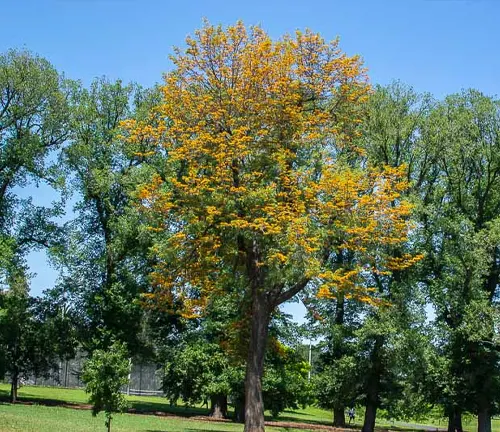
The cultivation of Silky Oak extends beyond its native rainforests. Adaptability to various climates has made it a sought-after addition to gardens and parks worldwide. However, this popularity has also raised concerns about conservation. Sustainable cultivation practices and conservation efforts are crucial to ensuring the continued existence of this botanical treasure.
Fragrance
One cannot overlook the subtle yet enchanting fragrance that accompanies the Silky Oak. The blossoms emit a delicate scent, adding a sensory dimension to its already captivating presence. The fragrance further enhances the tree’s appeal, making it a favorite in gardens and landscapes where its aromatic contribution is cherished.
Soil Stabilization
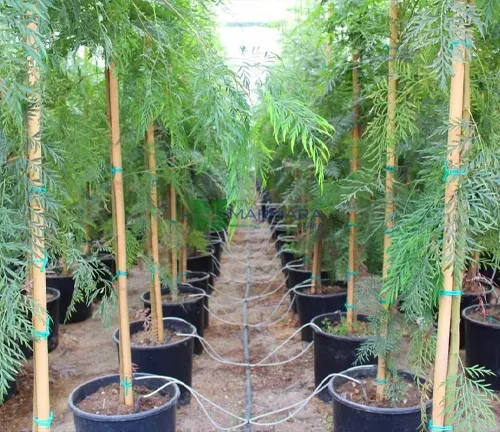
The roots of the Silky Oak play a significant role in soil stabilization. Their extensive network helps prevent soil erosion, making the tree a valuable asset in areas prone to land degradation. This ecological service adds another layer to the list of benefits offered by this remarkable species.
Common Uses
Apart from its role in woodworking, Silky Oak has found applications in various industries. The timber is employed in construction, joinery, and as a raw material for paper production. Its versatility ensures that every part of the tree is utilized, minimizing waste and maximizing its contribution to human needs.

Benefits
The benefits of the Silky Oak are manifold – from its aesthetic appeal to its economic contributions and ecological services. As a symbol of botanical beauty, a source of elegant wood, and a key player in sustaining biodiversity, the Silky Oak stands as a reminder of the interconnectedness of nature and the invaluable gifts it bestows upon us. Preserving and appreciating the Silky Oak is not just a matter of conservation but a celebration of the myriad ways in which nature enhances our lives.
Different Species
Grevillea robusta
(Silky Oak)
The most well-known species referred to as Silky Oak, native to Australia and known for its tall stature, fern-like leaves, and large golden-orange flowers.
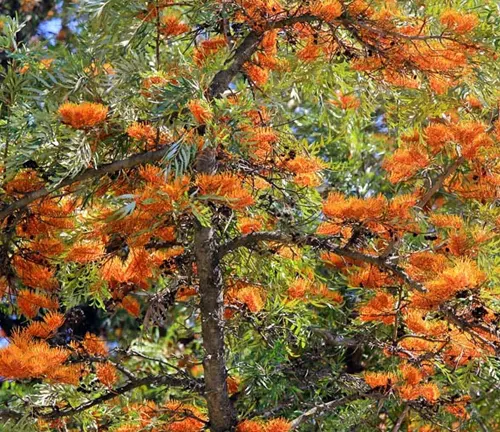
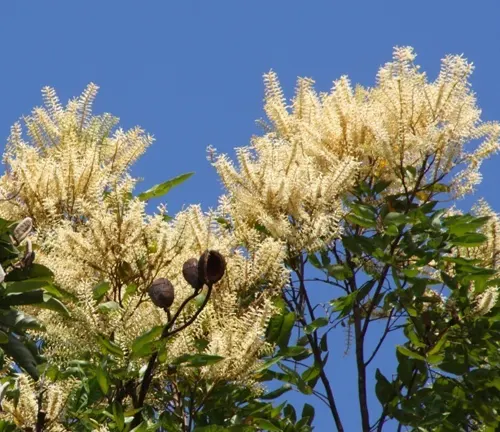
Cardwellia sublimis
(Northern Silky Oak)
Indigenous to Australia, the Northern Silky Oak is a species with similar characteristics to Grevillea robusta. It is known for its silky-textured foliage and is found in the rainforests of Queensland.
Allocasuarina luehmannii
(Australian Buloke or Silky Oak)
This is not a true oak but is sometimes colloquially referred to as Silky Oak due to the appearance of its bark. It is a native Australian tree with needle-like leaves and is part of the Casuarinaceae family.

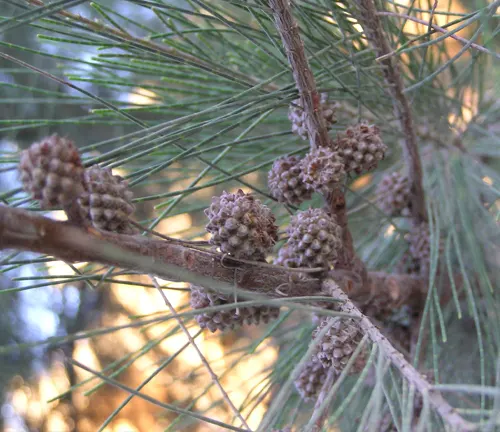
Casuarina cunninghamiana
(River Sheoak or Silky Oak)
Another species in the Casuarinaceae family, this tree is native to eastern Australia and is sometimes called Silky Oak due to its fine, fern-like branchlets.
Frequently Asked Questions (FAQs)
1. What is Silky Oak?
Silky Oak refers to several tree species, with Grevillea robusta being the most commonly known. It is an evergreen tree native to Australia, known for its striking appearance, fern-like leaves, and golden-orange flowers.
2. How tall does Silky Oak grow?
Silky Oak (Grevillea robusta) can grow up to 100 feet in height, making it a towering presence in its native rainforests.
3. What are the distinctive features of Silky Oak leaves?
The leaves of Silky Oak are finely divided and have a silky texture, which gives the tree its name. The foliage is fern-like and forms cascading clusters.
4. What is the significance of Silky Oak in woodworking?
Silky Oak timber is highly valued for its durability and lustrous finish. It is commonly used in furniture crafting, cabinetry, and even in the production of musical instruments.
5. How do you cultivate Silky Oak?
Silky Oak is adaptable to various climates and is cultivated in gardens and parks worldwide. It requires well-draining soil and a sunny location for optimal growth.
6. Is Silky Oak endangered?
While Silky Oak (Grevillea robusta) is not classified as endangered, there are concerns about conservation due to its popularity and widespread cultivation. Sustainable cultivation practices are encouraged to ensure its long-term survival.
7. Does Silky Oak have any ecological importance?
Yes, Silky Oak plays a vital ecological role by providing habitat and food for native wildlife. Its large, showy flowers attract pollinators, contributing to biodiversity in its natural habitat.
8. Can Silky Oak be grown in gardens?
Yes, Silky Oak is often cultivated in gardens for its ornamental value. It adds an elegant and tropical touch to landscapes, especially in regions with a suitable climate.
9. Does Silky Oak have any fragrant properties?
Yes, the blossoms of Silky Oak emit a subtle yet enchanting fragrance, enhancing its appeal in gardens and landscapes.
10. What are the common uses of Silky Oak besides woodworking?
Silky Oak timber is used in construction, joinery, and paper production. The tree’s versatility ensures various parts are utilized, minimizing waste.







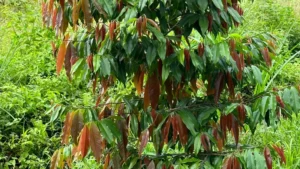
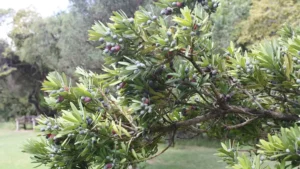




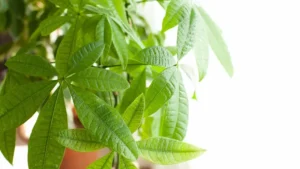
Leave your comment